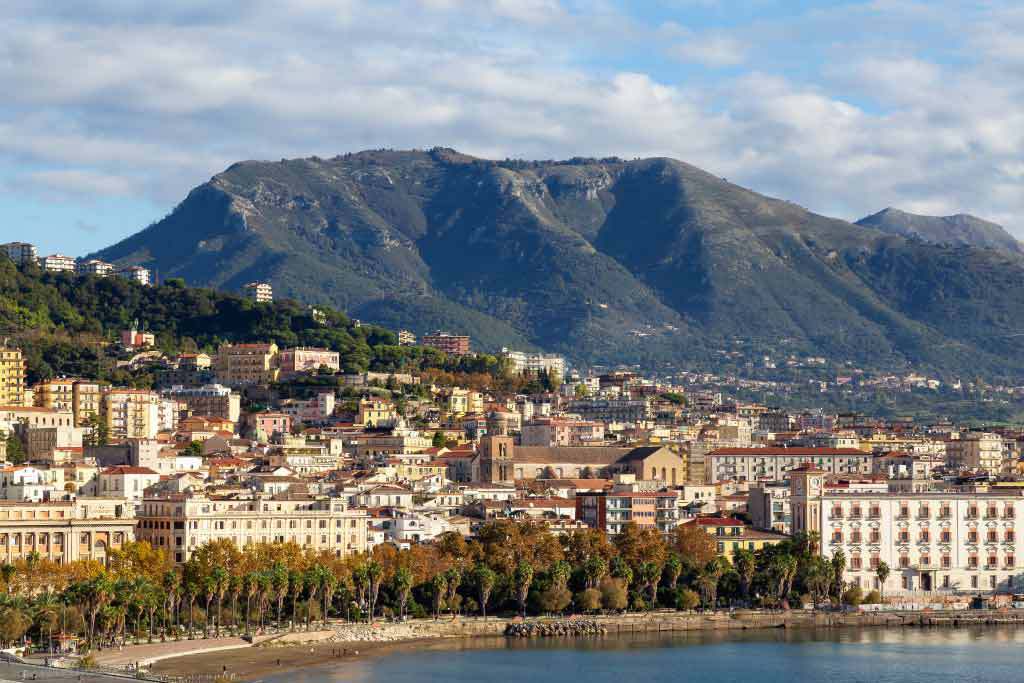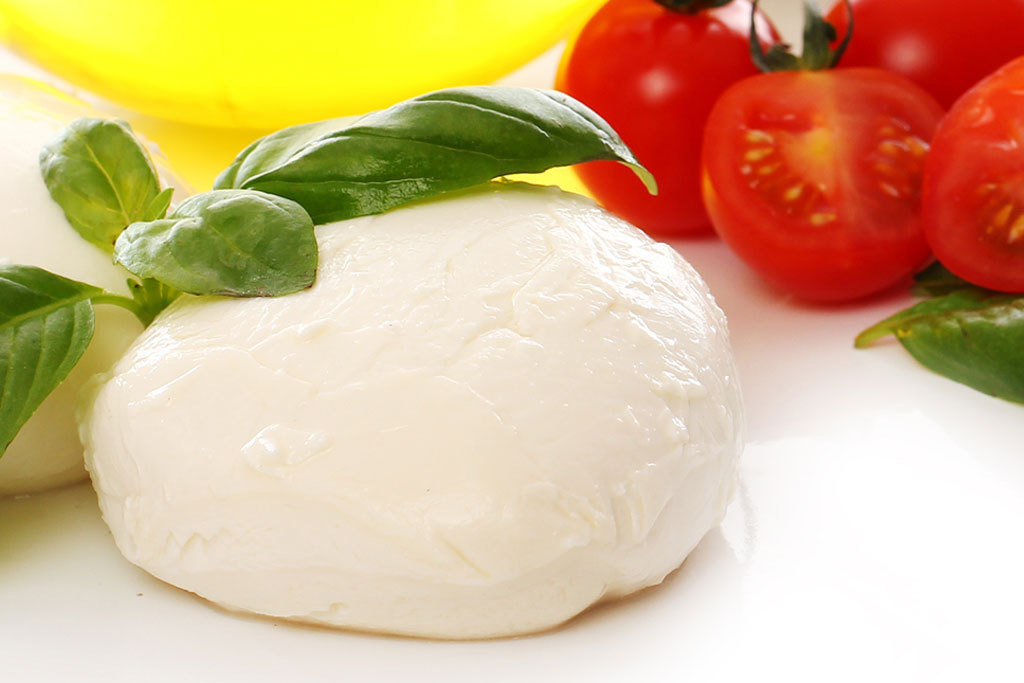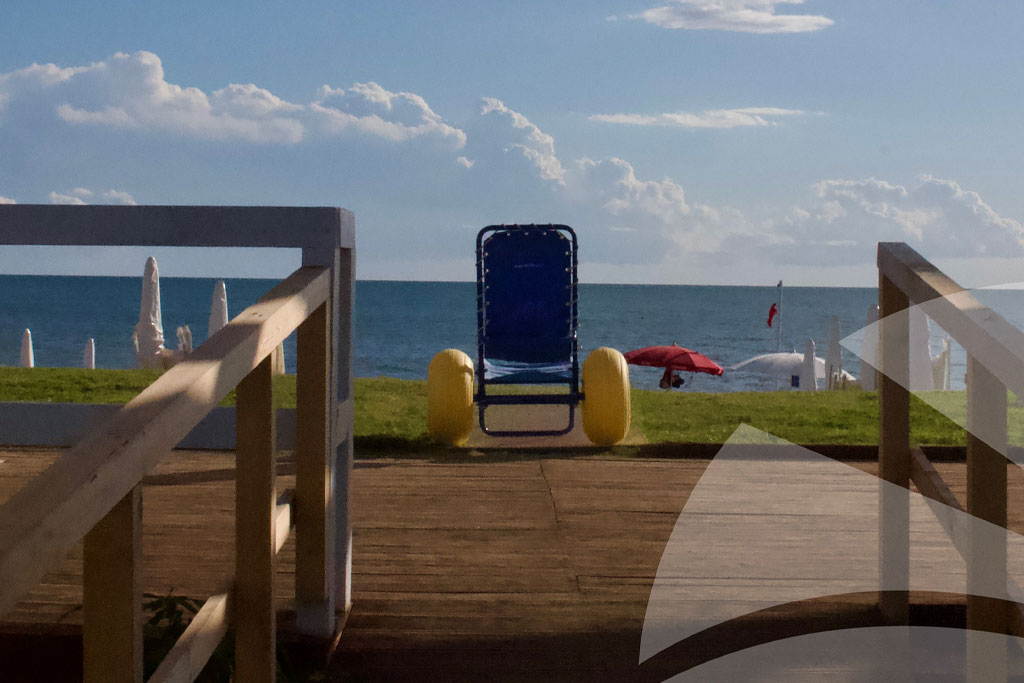The enchanting city of Salerno is a center of about 130,000 inhabitants-city overlooking the sea and navel between two splendid jewels such as the Amalfi and Cilento coasts. One of the largest provinces in Italy, 60 percent of its territory is declared a UNESCO World Heritage Site because of its historical-artistic and naturalistic value.
The Mediterranean climate, recent architectural renovation, an ancient culinary tradition and its strategic location at the center of important highway, port and railway hubs make it a destination for thousands of tourists from all over Italy and the World.
In its most recent period, it has risen to prominence for its characteristic “Luci d’ artista“, an event in which the entire city of Salerno is illuminated in every corner, street or garden by light installations of great emotional impact.
Fantastic animals, fairies and princesses, stars and planets have taken turns over the years illuminating the main streets close to the Christmas season, in the period from November to the end of January.
But to associate Campania’s capital city so rich in history and beauty only with a single event limited in time would be most unfair and inadequate.
Must-see stops for a short getaway in Salerno
Arriving in the city via highway from Naples, it is impossible not to notice his majesty the Castle of Arechi perched on a promontory overlooking the city of Salerno. Once home to the Lombard prince Arechi, nowadays the castle is a venue for events and performances and offers, to the
numerous tourists, an evocative view of the city and its gulf.
A splendid panorama can also be admired from Minerva’s Garden, the oldest botanical garden in Europe, also known as the garden of the simples where more than 250 different species of plants once used by the glorious Salerno Medical School to cure various diseases are still cultivated.
Staying in the ancient city center, a fixed stop for art lovers is the ancient Cathedral of St. Matthew.
The cathedral’s original Romanesque layout underwent several Baroque restorations following the 1688 earthquake, and this mix of architectural styles makes Salerno Cathedral unique. Also enchanting is its underground crypt where the relics of St. Matthew, the city’s patron saint beloved by Salerno residents, are kept.
St. Matthew’s Cathedral is not the only place of worship to visit in the city. Salerno is, in fact, the city of a hundred churches, many of them located in its historic center. First of all, the highest expression of the Baroque style, the Church of St. George with its treasure hidden under the floor: through a mechanical opening of the same it is possible to observe the remains of the pre-existing church from the Longobard era.
Remaining in the historic center, The complex of San Pietro a Corte and the chapel of Sant’Anna on its north side highlight in their structures the various historical alternations since the 1st century AD. The site is the only evidence of palatial architecture from the Lombard period, but there is no shortage of references to the early Christian tradition.
The city’s history can also be breathed within the walls of the Provincial Picture Gallery. Dozens and dozens of paintings ranging from the Renaissance to the first half of the 20th century are housed inside the Palazzo Pinto, home of the Pinacoteca. A plunge into the more distant past is, on the other hand, possible thanks to guided tours at the Archaeological Museum: a chronological itinerary that re-proposes the main cultural currents that emerged in Campania from prehistory to Roman times.
Strolling among culinary delights from the waterfront to Salerno’s historic center
A splendid tree-lined waterfront bounds the entire coastal profile of the city.
Divided into four blocks, it stretches from the recent and majestic Piazza della Libertà, Europe’s largest seafront square, to the outlying neighborhoods that over the years have seen the emergence of numerous beach lidos as well as the new “Marina di Arechi” marina.
Skirting the sea leaving behind the charming Piazza della Libertà, a fixed stop for ice cream lovers is definitely the Nettuno bar. Its brioche filled with ice cream is undoubtedly one of the city’s best calling cards. Continuing to walk in the same direction, one can easily reach one of the city center’s marinas, Molo Manfredi. From here and from the Maritime Station, numerous ferries depart connecting the capital to the resorts of the Amalfi Coast and those of the Cilento coast as well as to the islands of Capri, Ischia and Procida. It is thus possible to reach Amalfi, Positano or even Acciaroli and Palinuro while enjoying breathtaking views by sea.
Almost behind Molo Manfredi, at the end of the pedestrian Corso Vittorio Emanuele, we find the central train station from which, in a little more than half an hour, it is possible to reach other wonders of Campania such as the majestic Temples of Paestum and the evocative excavations of Pompeii. A must stop before arriving at the station is the old Bassano pastry shop. An old-fashioned and dimly lit store but one that has been making Salerno’s most famous “mille foglie” for decades.
But the local sweet specialties do not end there. Impossible not to mention the baba from the Diana pastry shop, which has recently moved to the eastern part of the city, the chocolate from the Romolo pastry shop, the croissants from the Salerno pastry shop, and last but certainly not least the scazzetta, pasticciotto and witch cake from the Antica dolceria Pantaleone in the heart of the historic center.
The historic center stretches parallel to the waterfront, and is characterized by countless alleys and narrow streets sometimes so narrow that only one person can pass through at a time. The walls and stairways of its innermost streets are embellished with murals bearing the verses of Alfonso Gatto, a distinguished poet viscerally linked to his Salerno, which rhymes with winter, rhymes with eternity. Ancient artisan stores alternate with restaurants and trattorias of typical local products where you can enjoy everything from stuffed spleen to seafood scialatielli.
Also typical of the place is the fried fish cuoppo. On Christmas Eve and New Year’s Eve all the town’s festively lit fish shops stay open until late engaged in the sale of the special cone-shaped paper wrapper overflowing with anchovies, squid, calamari and shrimp caught in the Gulf of Salerno and freshly fried.
Anchovies are big stars of Salerno menus, and not just fried. Cooked alla piattella with oil, salt, parsley, garlic and breadcrumbs, they are one of the oldest and poorest dishes of the local tradition.
Impossible, then, not to mention among the symbols of the city the Carminuccio pizza, which owes its name to its creator Carmine Donadio, owner of the pizzeria of the same name in the popular neighborhood of Mariconda. A soft, thin dough topped with tomato, cheese, peppered diced bacon and the ever-present basil: a mix that has nothing to envy the pizza of its Neapolitan cousins.
Typical of southern Italy with different peculiarities for each region is ciambotta, which in Salerno becomes vegetable cianfotta. This is a side dish made with eggplant, peppers and potatoes…all fried separately and then sautéed together in a pan that become an excellent side dish for her majesty the mozzarella di bufala di Battipaglia, pride of the entire southern province of Salerno and famous throughout the world.
To end the Salerno walk, there is no better way than to sip limoncello made from the typical sfusati lemons of the Amalfi Coast in a chilled glass. Their elliptical, tapered shape and thick peel with an intense aroma make them unique in the world.
Salerno is a very lively city in all seasons of the year. A favorable and mild climate, a millennial history, a strategic location, easy road, rail and sea connections, numerous tourist attractions and, last but not least, gastronomic specialties make Salerno the ideal destination for tourists of all ages both for short stays and for slightly longer periods.




